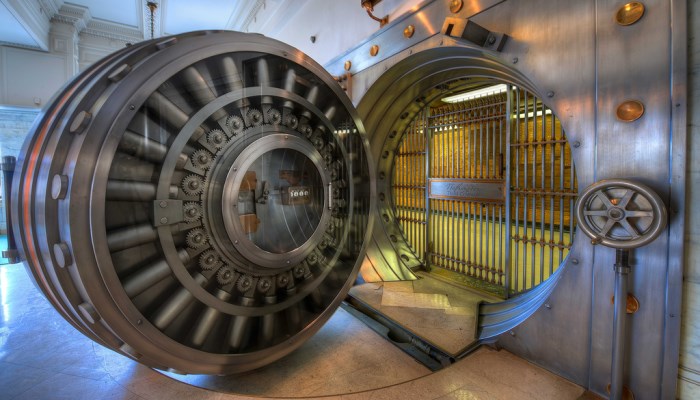After buying precious metals, customers are faced with the pivotal question of how to store and protect their new investments. Finding the proper storage for your gold or silver can be a very important decision given their significant value. Fortunately, it does not have to be a complicated one. Customers have many options when it comes to storing their precious metals, so they need to take into account a number of factors before settling on a final means of storage. Such factors they need to consider are how much money they wish to spend; how much security they require and how accessible their valuables need to be. To address these matters, we have four main storage options for precious metals.
Secretive Storage
Secretive storage is the simplest and least expensive method for storing gold or silver. This storage method is ideal for customers possessing smaller to medium sized collections of precious metals. Simply find a secure hiding spot in your house or on your property and store your valuables. This keeps others from knowing their whereabouts, while providing their owners with easy accessibility. Common practices for hiding precious metals include concealing them in a hollow book or burying them in your yard.
However, we would advise customers to consider storing their gold or silver in less obvious places since this will make it more difficult for prowlers to locate them. While customers benefit from the absence of storage fees and instant access to their possessions, keeping precious metals in a secret hiding place can increase their risk of damage, potentially decreasing their value. Equally as alarming is the lack of external security. In the event that someone does learn where you keep your gold or silver, there is nothing left to prevent them from taking your valuables, even if you were to maintain constant vigilance over them.
Safes
Safes provide a more secure method of storing precious metals in your home since they require either a combination or digital code to open. Additionally, because of their cumbersome weight and size, they are very difficult to move much less steal. Safes can also protect your valuables from any potential damages incurred by floods, fire or other natural disasters. There are even certain home insurance policies that will decrease your current rate if you declare the possession of one. The price of a safe can range anywhere between several hundred to several thousand dollars. Although size and composition material are the primary determining factors, the price of a safe will also be dependent on whether it is manually or electronically operated. To ensure that your valuables receive optimal protection against incidents of fire, customers are encouraged to purchase a UL (Underwriters Laboratories) rated safe of UL-15 spec or higher.
Banks
Many customers are not comfortable with the idea of keeping precious metals in their home because it can make them potential targets of theft and burglary. For these customers, we like to recommend using a bank to fulfill their storage needs. By turning to a third party storage facility to fulfill their storage needs, customers relieve themselves from the responsibility of having to constantly guard their valuables. Banks offer top level security both internally and externally, so they can rest assured that their gold and silver possessions are well protected.
There are two ways to store your valuables at a bank: safety deposit boxes and a bank vault. Safety deposit boxes are reserved for the private use of a single customer. These come in a variety of sizes depending upon the items being stored. For customers who don’t mind storing their valuables with other people, bank vaults are an ideal place to store larger investments. Unfortunately, there are some drawbacks to storing your precious metals at banks. First, customers are required to pay fees for these storage services annually. The second drawback is the limited accessibility. In order for a customer to physically view their valuables, they must visit the bank during its prescribed business hours, which typically coincides with most people’s work schedules. Customers may also have difficulty accessing their investments during federal holidays. These time restrictions can cause large problems for a customer in the event of a financial emergency.

